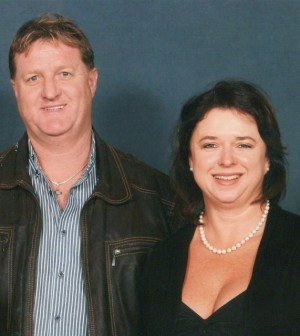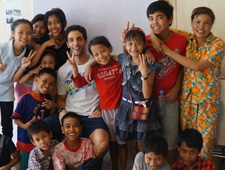When it comes to the history of racial segregation, South Africa’s is still very recent. From 1948 to 1994, legislation known as Apartheid divided citizens into four different racial groups – natives or black Africans, whites, coloured (mixed race), and Asians. Although deep segregation ended almost twenty years ago, there is still a stark sense of separation among its people. But, according to some people that we spoke with, it seems to be a separation that is mutually acceptable. This outlook made for an interesting lesson into the past and present state of South Africa’s people.
Name: Mark and Liz
Age: 50 and “younger than Mark”
Occupation: Entrepenuer
Hometown: Knysna
Mark and Liz were gracious hosts during our three-night stint in Knysna. They are by far two of the most friendly, generous, and welcoming people we’ve met on our entire trip. Mark’s an entrepreneur (currently running an automobile store) and Liz has actually recently begun working for his company, cleaning up the loose ends and sharpening up the day-to-day pieces of the business. Having both grown up in the same area just north of the Eastern Cape, the two have made their lives in Knysna. Their contagious passion for Knysna is passed on immediately to all of their guests and their stories and personalities made our visit so enjoyable. Through our conversations, Kat and I learned a lot about the town, the country, and the people.
What three words best describe the people of South Africa?
- Friendly
- Colorful (personality)
- Vibrant
What three words best describe South Africa?
- Vast
- Diverse
- Sunny
What is the top priority for the people of South Africa?
Education – Receiving a good quality of education and a tertiary education are important. They realize what an education can bring them in terms of opportunity. In some areas the teachers show up drunk so it can be bad. The most important thing is getting a good education which can lead to good jobs. Without it, it’s hard to find jobs to support a family.
One thing that was so great about Mark and Liz is that they loved sharing time with us, as little or as much as we allowed them to. During this time together, Kat and I took away a better understanding of South Africa and its people. Although we didn’t get a chance to speak with a black African, Mark and Liz gave us what seemed to be an unbiased opinion on how the country is and was during and after apartheid.
The history and dynamics of apartheid are extremely complicated. I was interested to learn about it from locals, but know that there is so much more to understand. Since I cannot begin to include everything about South Africa’s past, I thought I would include a few interesting things that I learned from my interaction and conversation with Mark and Liz:
- White people only make up about 10% of the total population yet they were an overwhelming ruling minority during apartheid.
- During apartheid, black people actually lost their South African citizenship and, rather, were considered a member of one of the independent ethnic tribes.
- Townships or shanty towns (essentially slums or run down communities where non-whites live on the periphery) are still in existence. Although there has been a lot of effort put into cleaning up and improving the townships, many are still in similar conditions – poor electricity, sewage and education. We passed by townships on the outskirts of almost every town.






Would be interested to hear how much racism and segregation you saw. I can only imagine how terrible it was 50 years ago.